MANILA: The Philippines’ most famous resort island Boracay re-opens Friday after a six-month clean-up intended to fix the damage done by unrestrained mass tourism.
Here are some other global hotspots that authorities have moved to protect:
Officials on the holiday island, Indonesia’s top tourist destination, declared a “garbage emergency” last year after the palm-fringed Kuta beach was swallowed up by mountains of trash.
Indonesia, second only to China as the world’s biggest contributor to marine debris, deployed 700 cleaners and 35 trucks to remove roughly 100 tons of debris each day from Kuta and two other popular beaches to a nearby landfill.
Known for its 900-odd human figures standing up to 10 meters (32 feet) tall, the isolated Pacific island severely curtailed visitor numbers in August this year due to concerns over the remote Chilean territory’s environmental sustainability.
Tourist stays on the island, believed to have been settled by the Rapa Nui people around the 12th century, were cut to 30 days from 90, after the population — along with the crime rate — doubled in a few decades.
Those who wish to live on the island are now required to be a parent, partner or child of the Rapa Nui people.
Dubrovnik, which boasts an old walled city, saw cruise ship arrivals shoot through the roof after it was used as a backdrop in the smash television drama series “Game of Thrones,” causing congestion as tourists made a beeline for the shoot locales.
Mayor Mato Frankovic told AFP the authorities plan to cut cruise ship numbers coming into the Adriatic port, while deploying cameras to count the number of people entering the old town.
Venice authorities are trialling a system that forces visitors to make a reservation if they want to go to the popular Saint Mark’s Square during peak hours.
They are also fining tourists 500 euros ($585) for bathing or having picnics in the city’s famous canals.
In Florence, officials have resorted to hosing down public spots such as church steps where many visitors congregate to eat picnics. This aims to prevent people from sitting on the wet pavement.
Peruvian authorities increased surveillance at the 15th-century Incan citadel high in the Andes mountain range in 2014 as nude photos and streaking became increasingly common.
Tourists have since at least 2013 been posting their naked selfies on social media, which the government described as a “disrespectful act” aimed solely at getting attention.
The glittering Thai bay immortalized in the movie “The Beach” was closed indefinitely on October 1 to allow it to recover from the impact of mass tourism, after a four-month respite failed to ease beach erosion and pollution.
About 5,000 tourists had arrived by boat each day to the beach framed by limestone cliffs that was made famous by the 2000 film starring Leonardo DiCaprio.
Paradise lost: Tourist spots in danger of being loved to death
Paradise lost: Tourist spots in danger of being loved to death

- Philippines, Indonesia, Dubrovnik, Venice, Florence, Peru and Thailand are among the hot spots in danger
How Saudi Arabia is leveraging regenerative tourism to blend luxury with sustainability

- Unsustainable tourism is degrading ecosystems, harming biodiversity, and leading to cultural exploitation
- Red Sea Global’s luxury destinations limit visitors to 1 million per year to ease pressure on the environment
RIYADH: At the heart of Saudi Arabia’s environmental strategy is regenerative tourism, which aims to protect natural habitats through science-led approaches and sustainable practices.
Unlike sustainable tourism, which aims to minimize harm, regenerative tourism strives to improve destinations through conservation, community engagement and science-led initiatives.
This includes implementing eco-friendly infrastructure, protecting biodiversity, and involving local communities in conservation efforts to ensure long-term environmental and economic benefits.

Raed Albasseet, group chief environment and sustainability officer at Red Sea Global, says the real estate company practices “regenerative tourism” with a commitment to operate on renewable energy alone.
“This commitment is not just a tagline; it’s woven into the very infrastructure of our destinations ... integrating sustainability into every phase of design and construction,” he told Arab News.
“Visitors can already experience this firsthand at The Red Sea, where eco-conscious designs are effortlessly integrated into every aspect of their stay.”
The Red Sea, a luxury regenerative tourism destination on Saudi Arabia’s west coast, features world-class resorts. By 2030, it will include 50 hotels, 8,000 rooms and more than 1,000 residences, while capping visitors at 1 million annually to help protect local ecosystems.
Opinion
This section contains relevant reference points, placed in (Opinion field)
As part of this plan, Red Sea Global has developed the Desert Rock Resort, a newly opened retreat that blends seamlessly with its natural surroundings. Designed to reduce energy use and maximize natural light, its elevated rooms feature large openings that mimic cave mouths, allowing ample daylight to filter in.
Before construction began at the Desert Rock Resort, Red Sea Global partnered with the King Abdullah University of Science and Technology to conduct a comprehensive marine spatial planning simulation.
“This was the largest study of its kind ever undertaken in Saudi Arabia, and it provided crucial data to inform our master plan and minimize our impact on the delicate marine ecosystem,” Albasseet said, adding: “As a result, we limited development to only 22 of the more than 90 islands at The Red Sea destination.”
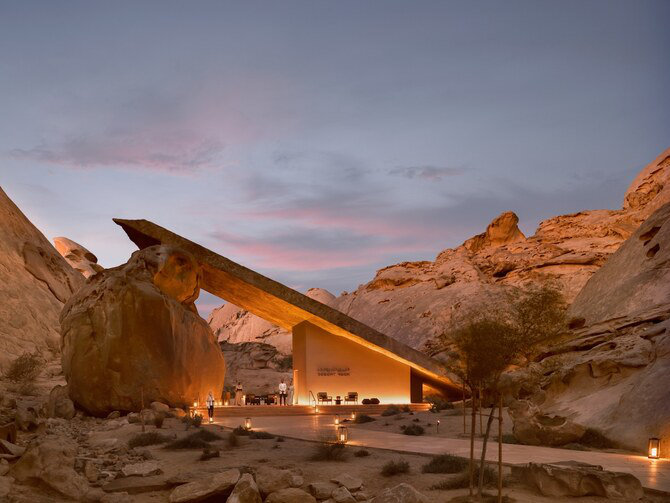
The Desert Rock Resort even repurposed excavated materials, meaning no additional materials were brought in for the main infrastructure.
“We used the mountains’ natural stone for interior and exterior walls and concrete was mixed using local sources of sand and stone,” said Albasseet. “To further reduce on-site disruption and waste, we emphasize pre-fabrication and off-site manufacturing.”
Moreover, Red Sea Global’s hotels and resorts are powered by solar energy, allowing guests to enjoy an eco-friendly destination with a zero carbon footprint.

Albasseet said the backbone of the company’s renewable energy strategy was Red Sea’s vast solar farms, which include hundreds of thousands of photovoltaic panels — more than 750,000 are currently in place.
“These farms generate clean electricity, significantly reducing our reliance on fossil fuels and minimizing our carbon footprint,” he said.
“To ensure a consistent and reliable power supply, even when the sun isn’t shining, we’ve also built one of the world’s largest battery storage facilities at The Red Sea. This … allows us to store excess solar energy generated during the day and use it to power our resorts at night.”
DID YOU KNOW?
• Diriyah, a historic landmark in Riyadh, is being developed sustainably under Vision 2030, earning platinum-level LEED precertification.
• The Farasan Islands, a biodiverse Red Sea archipelago, are being developed for conservation and ecotourism.
• Soudah Development is transforming Saudi Arabia’s southern region into a luxury destination with a focus on ecosystem restoration.
This reliance on solar power extends beyond Red Sea Global’s resorts and hotels.
“It also powers Red Sea International Airport, putting it on track to become the region’s first airport powered entirely by renewable energy,” Albasseet said. “Even our 5G network, a crucial component of modern connectivity, runs on solar energy, making it the world’s first sunlight-powered network.”
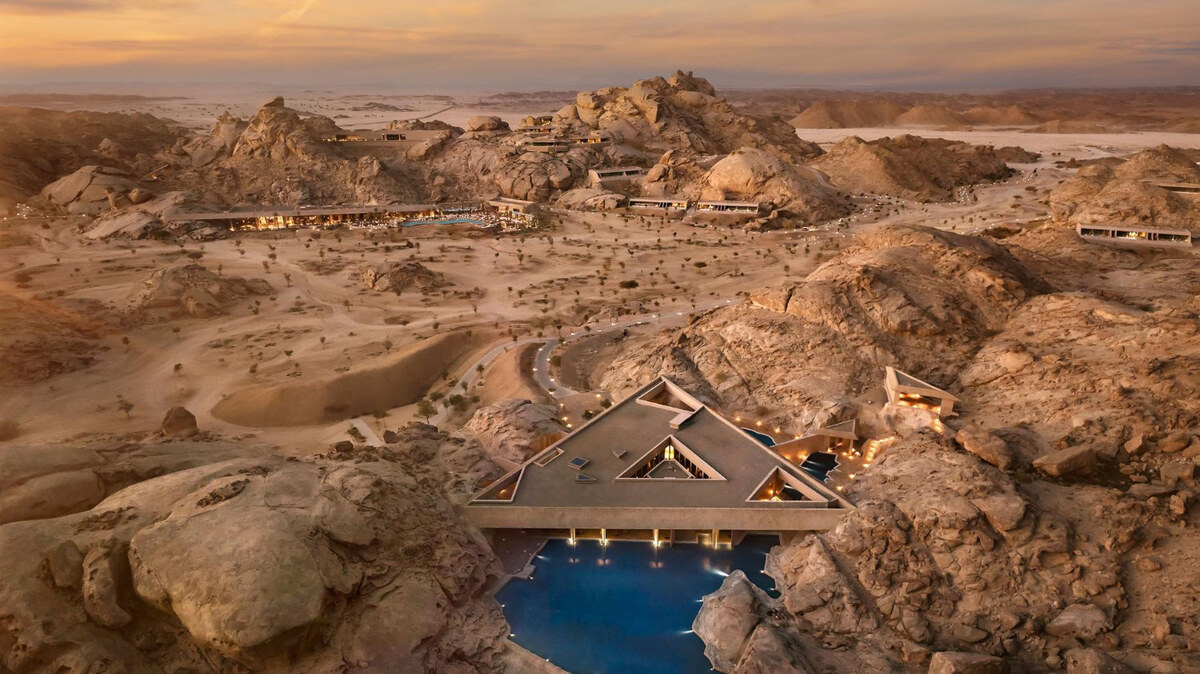
Shebara and Desert Rock, which opened to guests last year, have integrated advanced water systems and water-saving strategies through smart irrigation systems that optimize water use.
“A key element of our water conservation efforts is the implementation of closed-loop systems. Notably, at Desert Rock we have advanced water retention and distribution systems that capture rainwater,” Albasseet said.
“This captured rainwater is being used to sustain the surrounding wadi, revitalizing the local ecosystem and minimizing reliance on external water sources.
“The resort’s design also incorporates water-efficient fixtures and landscaping, further reducing water usage in day-to-day operations. This integration of natural water systems into the resort’s design demonstrates our commitment to working with, rather than against, the natural environment.”

The consequences of unsustainable tourism are far-reaching, ranging from the degradation of delicate ecosystems and biodiversity loss to the exploitation of local communities and cultural commodification. “The current trajectory is simply not viable,” Albasseet said.
“Encouraging sustainable tourism practices is no longer a choice but a necessity for the future of our planet and the travel industry itself … The industry’s contribution to greenhouse gas emissions, estimated at 8 percent globally, underscores the urgent need for transformative change.
“This is not simply about minimizing negative impacts; it’s about actively restoring and regenerating the destinations we cherish.”
Furthermore, he added: “These practices undermine the very foundation of the tourism industry, jeopardizing the natural and cultural assets that attract visitors in the first place.
“The increasing awareness of these issues among travelers, coupled with global commitments like the Paris Climate Agreement and the UN Sustainable Development Goals, further reinforces the need for the industry to embrace sustainability.”

Review: Experience luxury living at Shebara on the Red Sea in Saudi Arabia

- Can the Kingdom’s latest beach resort live up to its eye-watering price tag?
RED SEA: Overwater villa resorts continue to attract holiday goers around the world, but the Kingdom’s latest beach resort, Shebara, on the Red Sea, is breaking the mold with its futuristic designs.
It’s rare that a resort’s architecture is seen as its biggest draw, but that is exactly what Killa Design, the studio behind Dubai’s iconic Museum of the Future, has managed to achieve, with its silver stainless-steel pods that dot the ocean in a necklace-like curve 25 kilometers off Saudi Arabia’s coastline.
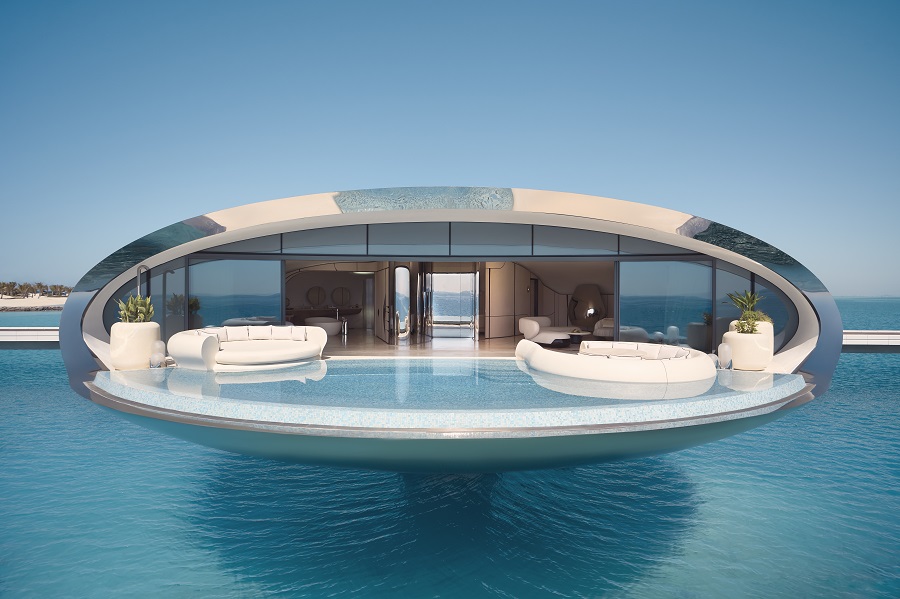
Most visitors will arrive from elsewhere in the Kingdom via the Red Sea International Airport. Currently an efficient two-hall operation — until developers build a larger airport set to welcome international flights — beach-ready tourists arrive at Shebara via a 30-40-minute boat ride or a 30-minute seaplane flight that departs from nearby the airport, which currently serves domestic flights from Jeddah and Riyadh.
Sunlight reflects off the resort’s 73 orb-like villas as guests approach, with the mirrored surface of each pod changing from sunlight to sunset. Both the Beach Villas and the Overwater Villas are available with one or two bedrooms.
The resort, which is reportedly powered entirely by an on-site solar farm, has all the amenities you would expect for the SAR9,000 (just under $2,400) nightly price tag (for a one-bedroom Beach Villa), but, as we said, it’s the spacious living spaces themselves that are the highlight. The luxe spa, well-kitted out gym and water sport offerings are really just there to complement the rooms, both the exteriors and interiors of which are worthy of a Bond film.
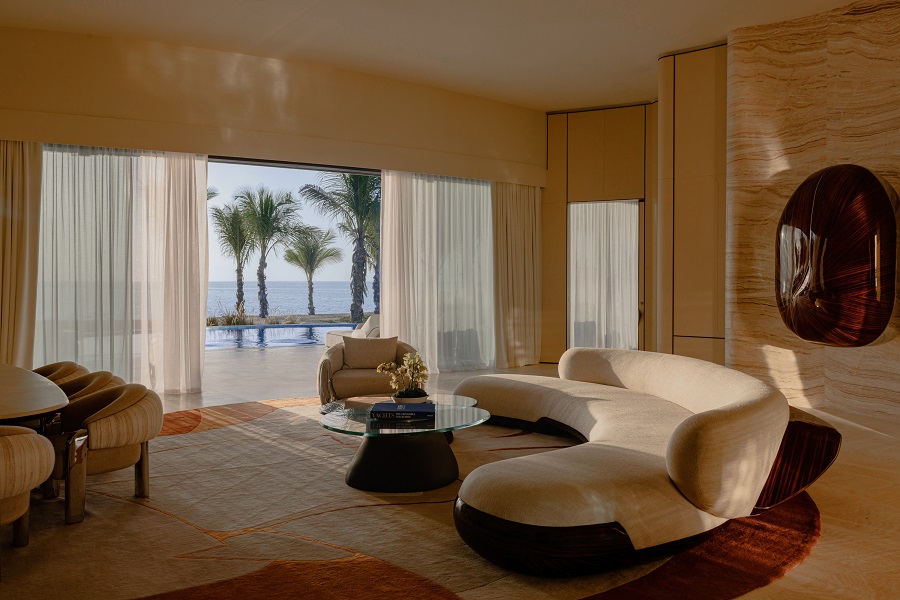
The interiors — by Studio Paolo Ferrari — are a masterclass in experiential living: steel curves, pops of burnt orange, and leather-clad curved walls may not be to everyone’s taste but it’s an experience — one that comes with a reflective button-operated bar that sits like a giant beetle near the living area.
A fully equipped kitchenette is a plus point for guests keen to use the various Nespresso gadgets. Trek over to the bathroom — even the one-bed Overwater Villa is a roomy 188 sq. meters — and you’ll be treated to a free-standing bathtub and separate, curved shower room.
From the lights to the air conditioning and patio doors, it’s all touch screen or button-controlled. Hitting a switch triggers a swoosh as the French doors open to reveal endless blue sea, with a small dipping pool and two outdoor seating areas on a marble-clad deck. For guests seeking a little extra privacy while taking a dip, it should be noted that the overwater villas’ deck pool and sea-skimming overwater hammock area are not shielded from view.
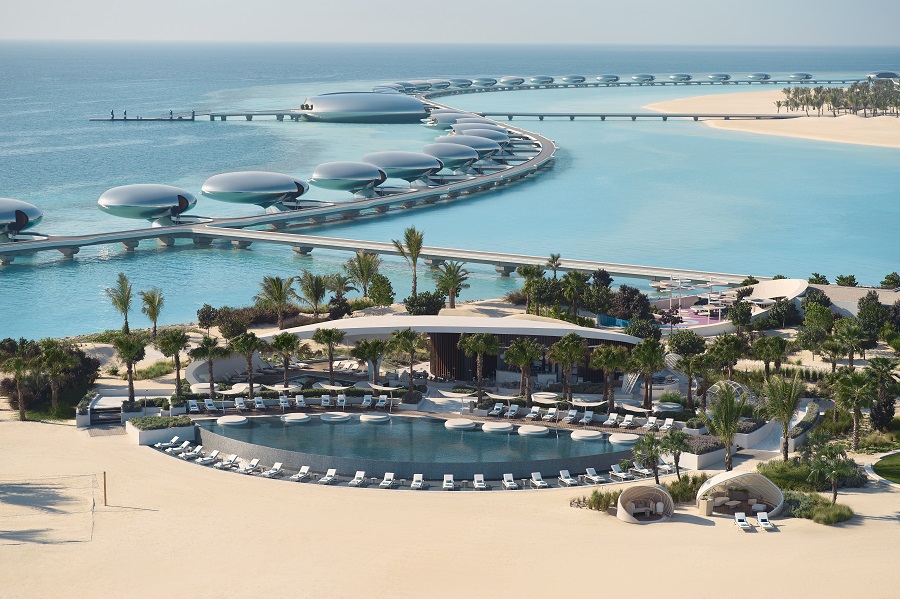
Guests travelling in larger groups are able to reserve an entire islet — the Beachfront Crown Villas Ensemble option, which includes a three-bedroom villa and three one-bedroom villas. The Beachfront Royal Villas Ensemble on the separate Sheybarah Island, featuring a private dock, is also available. This option boasts a four-bedroom villa and three one-bedroom villas.
Walk or catch a buggy through beautifully landscaped soft dunes to the spa and you’ll be treated to a menu of massage, facial and hammam options. The post-treatment relaxation area, with the usual sauna-and-steam room mod cons, is a little on the small side.
Dining options include iki.roe, serving modern Japanese-Nikkei cuisine; Ariamare, led by restaurateur Chef Marco Garfagnini whose menu offers Mediterranean flavors; Lunara, an international brasserie; and Saria Pool Bar & Grill, a beachside venue specializing in Levantine cuisine. Solera, an adults-only pool bar, is the ideal spot to watch a spectacular sunset with a mocktail in hand.
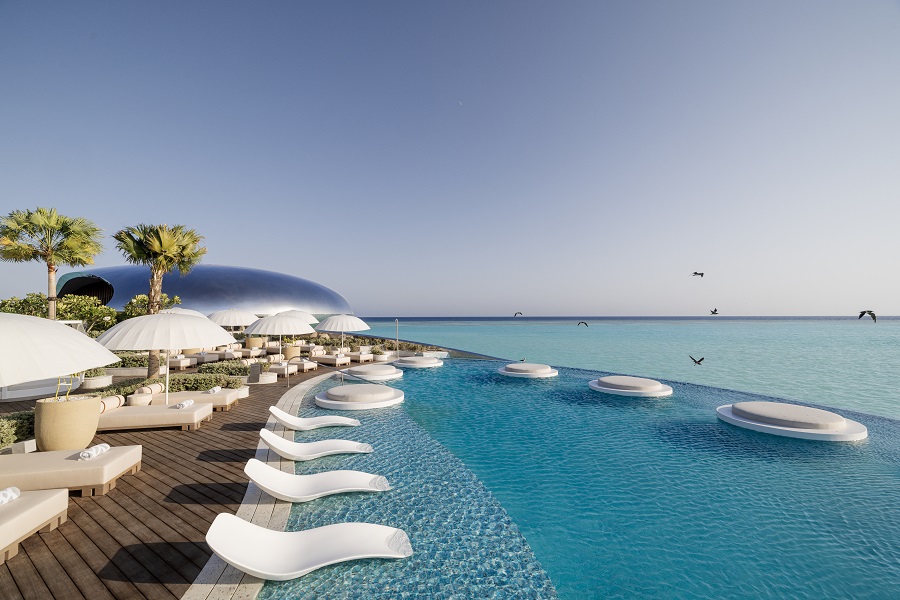
All in all, it’s as luxurious as it gets. But it has to be said that sea resorts do have to contend with more than their fair share of wear and tear due to the weather conditions they face. It is perhaps unfair to expect the resort’s many glass and steel surfaces to be crystal clear and brilliant all the time, but if we were nitpicking — and at this price point, we surely must — more attention could be paid to the details in the public areas as it all feeds into the experience. That being said, the rooms themselves are pristine.
While Mother Nature does battle with the resort’s maintenance staff on a daily basis, she’s also the source of one of Shebara’s most stunning offerings; the snorkeling at this resort is a must as the Red Sea is famous for its diverse marine life, clear blue-green waters and colorful coral.
While there are similar resorts the world over, the architecture and fresh take on beach living make Shebara well worth a visit.
Inside Red Sea Global’s newly opened Desert Rock Resort

RED SEA: As Saudi Arabia expands its portfolio of luxury hotel offerings, the newly opened Desert Rock Resort stands out for its otherworldly terrain and exceptional service.
There will be no quibbling about the benefits of Saudi Arabia versus the Maldives here — an issue that has crept up when potential visitors discuss Red Sea Global’s other outposts, such as the futuristic overwater resort Shebara. When it comes to Desert Rock there is simply nowhere else like it and the resort has leaned in heavily to make use of the spectacular landscape.
Set amid humbling mountains pockmarked with caves, the resort is a 20-minute drive from Red Sea International airport.
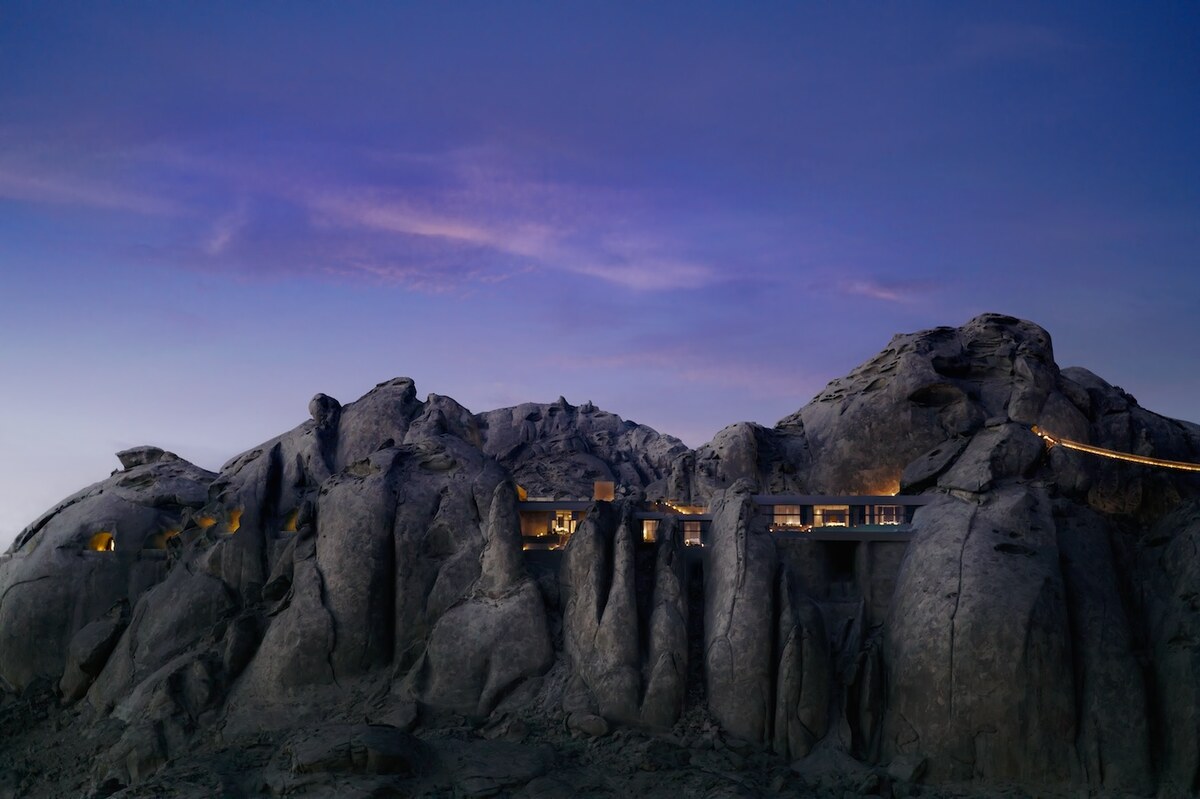
Home to 32 Wadi Villas on the valley floor, 17 Cliff Hanging Villas, four Mountain Crevice Villas, one Royal Villa and 10 Mountain Cave Suites carved into the rockface itself — yes, it’s as mind-boggling as it sounds — the hotel boasts private, temperature-controlled pools in every room and amenities that go a long way to helping guests understand the eye-watering price tag — Dyson hairdryers, Frette sheets and an array of luxe poolside accessories — while an assigned “Villa Host” takes care of your every need via WhatsApp.
While the mountain-top Cave Suites and their views of endless rolling deserts and soaring rust-colored mountains are an influencer’s ticket to viral fame, the two-bedroom Mountain Crevice Skyline Villa is ideal for a larger group — with a conversation-starting bathtub (it fit at least five giddy, fully-clothed adults on our press tour) and glass-ringed fire pit.
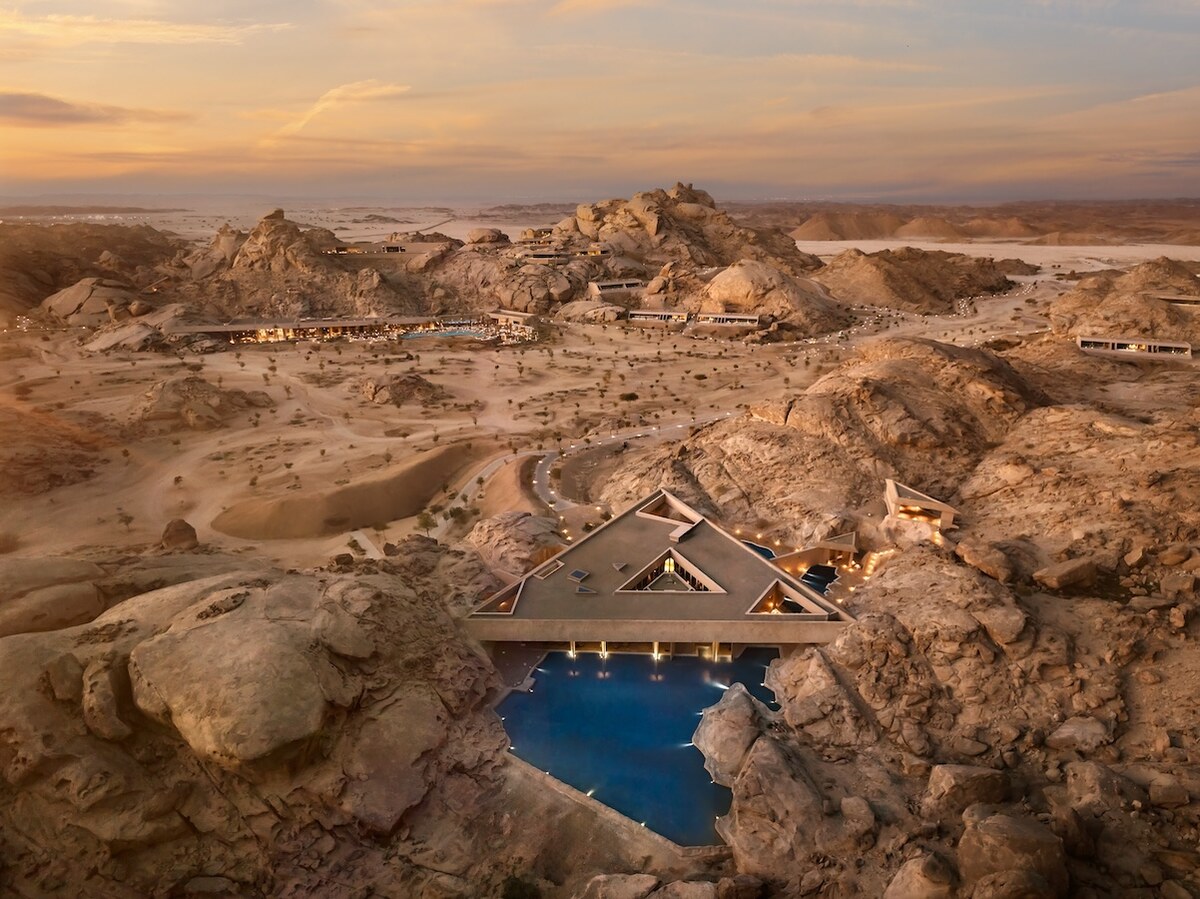
Descend to the valley floor and Oppenheim Architecture’s bunker-like structures melt into the Martian landscape. Use your chic wooden key card — the details are everything at Desert Rock — and you’ll be met by cozy interiors by Toronto’s Studio Paolo Ferrari. Earthy tones, a focus on luxury stone and bronze-brown accents make the large villas and suites opulent without losing the warmth of the desert.
A pool, kids’ club and star-gazing evenings are complemented by the Akun adventure hub, which offers thrilling ziplining, via ferrata, abseiling, rock climbing and archery, with more activities planned for 2025.

A team is on hand to keep visitors safe, but this is no easy experience — we climbed up to the ziplining jump off point on the bare mountain face, at some points resorting to all fours as we followed a rough path hewn into the rock that often became no path at all.
That refusal to bend to lazy luxury is also shown in the 622 steps one can climb to the highest point of the hotel, an observatory reached by crossing a rope bridge at a dizzying height. The lack of a lift was a wise choice –— it may not be easily accessible but that is exactly what makes the astounding view once there so worth it.
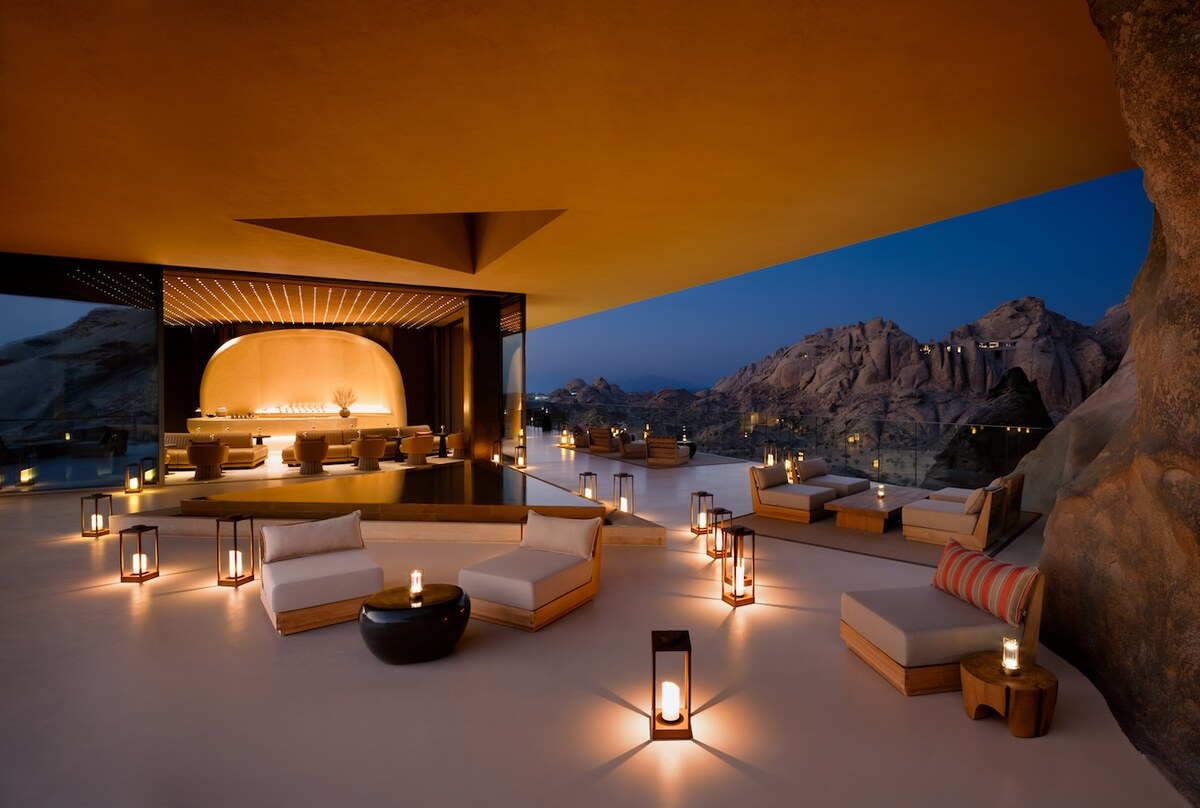
The flipside, of course, is that certain areas of the resort are not accessible for guests with physical disabilities. It’s also important to note that — due to the space this hotel takes up — travel between rooms, restaurants and the spa is usually by buggy.

The four main eateries — NYRA, helmed by Turkish chef Osman Sezener whose restaurant in Bodrum has one Michelin star; MICA, a buzzy mocktail bar that also offers small plates; breakfast spot Basalt, which transforms into an Indian eatery at night; and the poolside Wadi that offers Peruvian cuisine — rival the brightest stars in the Gulf’s major cities, with NYRA and Wadi standing out for their fresh, colorful dishes including tender beef tongue and artfully presented seafood plates. Many of the courses were presented with specific beverage pairings that drew out the flavors of their accompanying dish and pushed experimental mocktails to heights not before experienced by this writer.
Round that all off with a spa that boasts views of soaring, craggy cliffs, as well as indoor and outdoor treatment rooms, a water therapy room and a couple’s hammam room, and you’ve got the ideal recipe for a serene sojourn in the Saudi desert.
Tunisia sets sights on becoming world’s top seawater therapy spot

- Thalassotherapy is an “ancestral heritage” for Tunisians, “since hydrotherapy has existed in Tunisia since antiquity, at the time of the Carthaginians and the Romans,” Shahnez Guizani, the head of the National Office of Thermalism (ONTH), told AFP
KORBOUS, Tunisia: With a Mediterranean coastline, natural thermal springs, clement weather and affordability, Tunisia has become the world’s second-largest destination for seawater-based treatments known as thalassotherapy.
Now, it is setting its sights on overtaking France to claim the top spot.
“The main advantage of Tunisia is its coast and thalassotherapy,” compared with neighboring countries, said Mario Paolo, an Italian, at the Korbous thermal spa, perched on a hill an hour’s drive from the capital, Tunis.

A 78-year-old retiree who has lived in Tunisia for the past five years, Paolo said he frequently visits Tunisian thalassotherapy centers “to get back in shape.”
“Enjoying sea water and natural springs is not just leisure but also a therapy,” Paolo said after a thyme and rosemary oil massage.
Korbous, a coastal town on the Cap Bon peninsula, has historically been one of Tunisia’s hot spots for the therapy, which uses sea water and other marine resources.
Thalassotherapy is an “ancestral heritage” for Tunisians, “since hydrotherapy has existed in Tunisia since antiquity, at the time of the Carthaginians and the Romans,” Shahnez Guizani, the head of the National Office of Thermalism (ONTH), told AFP.

Other popular thalassotherapy destinations in the country include Sousse, Hammamet, Monastir, and Djerba, which Tunisian news agency TAP said was named the Mediterranean thalassotherapy capital in 2014 by the World Federation of Hydrotherapy and Climatotherapy.
Rouaa Machat, 22, said she traveled from France to Korbous for a three-day wellness retreat.
“I’m here to enjoy the types of water this beautiful town offers,” she said, referring to the use of seawater, spring water, and desalinated water for therapy.
“But I am also here for this,” she added, grinning and pointing to the Korbous sea and mountains.

Customers mainly come for the quality of spring water, said Raja Haddad, a doctor who heads the thalassotherapy center at the Royal Tulip Korbous Bay hotel.
Today, Tunisia boasts 60 thalassotherapy centers and 390 spas, 84 percent of which are located in hotels, according to the ONTH.
Tourism accounts for seven percent of the country’s GDP and provides nearly half a million jobs, according to official figures.
The sector has seen a decade of setbacks due to terrorist attacks and later the COVID-19 pandemic.
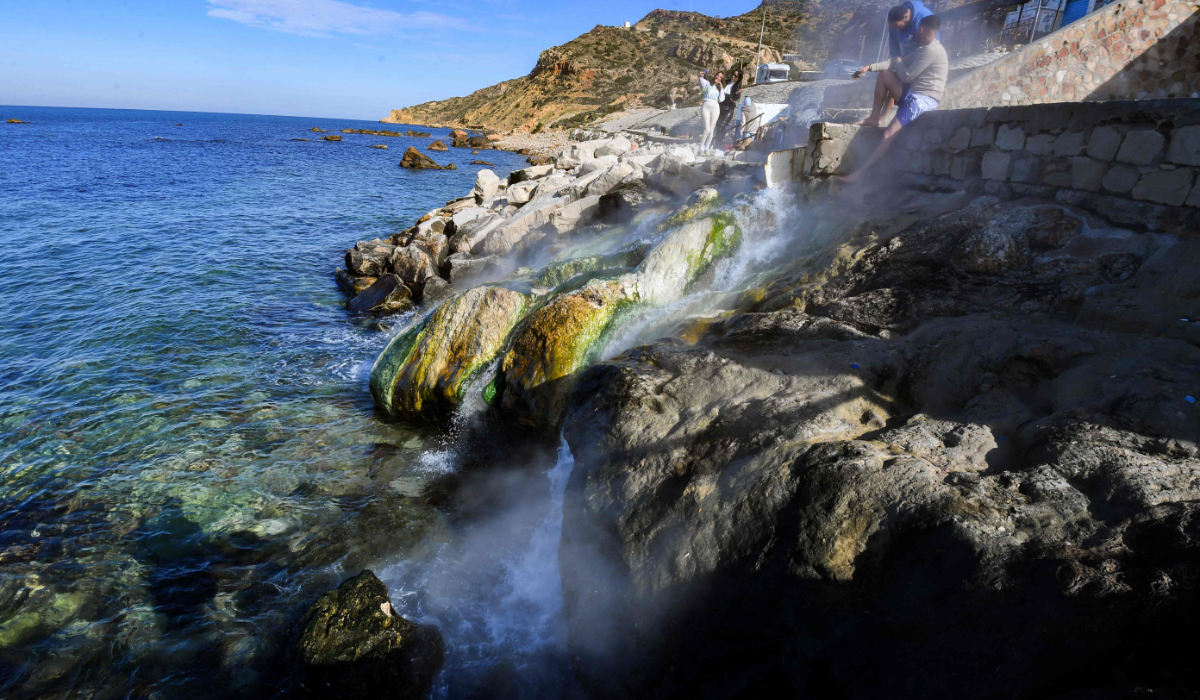
But it has been recovering again as the number of foreign visitors exceeded 10 million last year — a record for the country of 12 million people.
Guizani said thalassotherapy on its own draws about 1.2 million foreign visitors a year, with “70 percent coming from Europe, including 40 percent from France.”
The industry generates approximately 200 million dinars ($63 million, 60 million euros) per year, she added.
That compares with a French thalassotherapy market valued at around 100 million euros last year, according to market research firm Businesscoot.
At a luxury hotel near Monastir, a thalassotherapy center buzzes with customers despite the cold winter season.
Visitors have come from France, Germany, the United Kingdom, Canada, among other countries.
“As soon as you arrive, you find palm trees and the sun,” said Monique Dicrocco, a 65-year-old French tourist. “It’s pure happiness, and it’s also worth your money.”
“Here the therapy is much cheaper than in France, with 1,000 euros a week all inclusive instead of 3,000,” she added.
Jean-Pierre Ferrante, 64, from Cannes, said he found “the quality of the water and the facilities just as good as in France.”
Kaouther Meddeb, head of the thalassotherapy and spa center at the Royal Elyssa Hotel in Monastir, said the number of clients has been growing lately.
Yet despite meeting international standards, the sector remains underappreciated in Tunisia, she said.
“There’s a lack of communication and promotion,” she added.
Experts say more investment is needed in infrastructure. This includes road improvements and air services, they say, as there are few low-cost flights.
But plans are already underway to develop eco-friendly thermal resorts in regions like Beni M’tir, a mountainous village in the northwest, and near Lake Ichkeul south of Bizerte, said Guizani.
“With all the advantages it has, Tunisia is poised to become the world leader in thalassotherapy,” she added.
Exploring the history of Saudi Arabia’s ancient Dumat Al-Jandal

- Dumat Al-Jandal was strong and rich because of trade, says Saudi archeologist
RIYADH: In the heart of Al-Jouf, around 50km away from Sakaka, is the city of Dumat Al-Jandal — or, to give it its ancient name, “Adumato.”
Civilizations and kingdoms have thrived here for thousands of years, leaving behind traces of their existence carved onto walls and corners.
“It was a rainy period with rivers and forests, then it turned into a savanna, then into a period of little rain, then the habitation moved to other nearby sites such as the site of Al-Jamal and the site of Al-Rajajil,” explained Hussain Al-Khalifah, a Saudi archaeologist with over 30 years’ experience.

“After that, the Arabian Peninsula became a desert as we see it today. In ancient times, humans moved to sites with fertile soil and water resources. Therefore, Dumat Al-Jandal is one of the oldest cities inhabited around the second millennium BCE,” he said.
FASTFACT
Among the kingdoms and empires that tried to control Dumat Al-Jandal were the Assyrians, who made numerous attempts to control and capture the lands.
A trade road was created to exchange goods and link regions, and Dumat Al-Jandal was one of the significant points on this for people coming from the south of the Arabian Peninsula.
“It was an important point at the beginning of the land trade,” Al-Khalifah told Arab News.

“Dumat Al-Jandal was strong and rich because of trade. The people were protectors of the trade that passed by the city and, therefore, they took some of the goods in exchange for protecting merchants.”
Among the kingdoms and empires that tried to control Dumat Al-Jandal were the Assyrians, who made numerous attempts to control and capture the lands.
However, another kingdom was rising at the same time — the Arabian Qedarites, which not only prevented the Assyrians from taking Dumat Al-Jandal but also expanded their territory until they reached Palestine, Al-Khalifah said.
The Assyrians captured Adumato eventually, though the exact date is unknown.
They were known to document information on clay tablets, some of which can still be seen today at Dumat Al-Jandal. They are among the primary sources that mention Arabs, providing a description of the people of the city and one of their queens, Talkhunu, among others.
They also mention a rebel named Yabu who revolted against Ayatea, the king of Dumat Al-Jandal who was loyal to the Assyrians.
The Assyrian king, an advocate of justice who despised aggression and rebellion, sent warriors to aid Ayatea who caught Yabu and put him in chains.
The tablets also mention a popular souk which took place each year on the first day of spring.

















